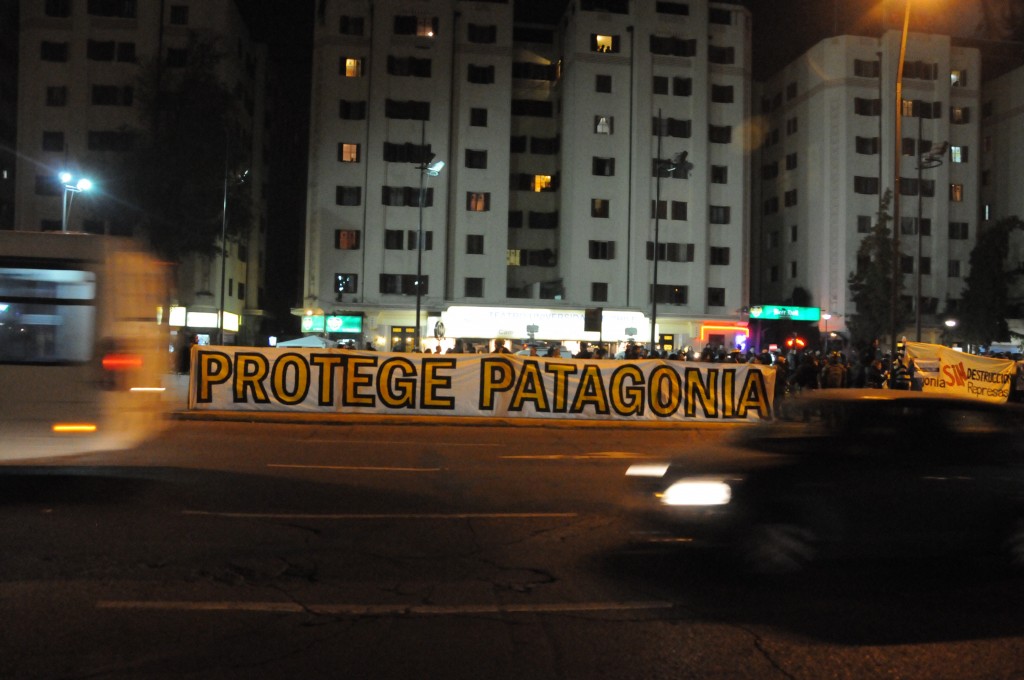 On Monday night while many of you were snug in front of your televisions, your computers, your latest issue of whatever magazine you can get there and I can’t get here, I was listening to the sound of shoe soles slapping the ground on the tiny side street of Juana de Lestonac in Parque Bustamante. The sirens would advance, and the slappity slap against the cobblestones would grow louder. As the sirens backed off, I could hear people catching their breath, and watch as the puff of teargas left behind lingered in the air. We all hoped for no breeze.
On Monday night while many of you were snug in front of your televisions, your computers, your latest issue of whatever magazine you can get there and I can’t get here, I was listening to the sound of shoe soles slapping the ground on the tiny side street of Juana de Lestonac in Parque Bustamante. The sirens would advance, and the slappity slap against the cobblestones would grow louder. As the sirens backed off, I could hear people catching their breath, and watch as the puff of teargas left behind lingered in the air. We all hoped for no breeze.
Tear gas smells like many things. It’s sort of somewhere between lemon-pepper skunk and burning rubber. My first reaction is to sneeze, followed by a burning throat. In the worst of all cases, I am chokingly, eye-streamingly, blind. It feels like a fine glass dust has been trapped between my eyes and eyelids, and like a giant, filthy feather duster got caught in my throat. I cough and sputter. My lips burn.
Tear gas (and the police in general) is what people were running away from on Monday night in Santiago, near Plaza Italia, the country’s flashpoint for anything exciting. When Gonzalez and Massú won the Olympic gold medal for tennis, people went to Plaza Italia to celebrate. Win or lose, for sports, after a big game, presidential election, everyone goes.
And then there was Monday. On Monday there was an important vote in the south of Chile, which approved HidroAysén, a hydroelectric dam project which would obstruct the flow of the most voluminous river in Chile, and place a giant set of electric towers across the clean, clear sky of one of Chile’s greatest treasures, Patagonia. The dam project would cost more than 7 billion US, and stretch electrical wires across 2300 km of untouched land, much of it through parks, wetlands and nature reserves. Sixty one percent of Chileans oppose the dam project. And eleven out of the twelve committee members supported it.
I went to the demonstrations, both in support of the Patagonia Sin Represas (Patagonia without dams) and to take pictures.
But what I didn’t tell you is that we were peacefully chanting, talking, shouting. We were a few thousand strong. The police drove a series of buses to block protest signs from Avda. Providencia, a major conduit to the east. And then the crowd pressed forward, as though it would take over the Alameda (the same street, but here heading down to the west). And the guanaco came into action, shooting water into the crowd, followed by teargas, which hangs white and puffy in the sky as it sinks and dissapates to burn your throat, your eyes, your lips.
And people ran. They ran to the south, along Vicuña McKenna, and one block further east, along Parque Bustamante. Spilling through the streets in a panic, hand in hand. Panting with the effort and pulling scarves over their faces. Sharing lemons, which quiet the burn in your throat. Running, stopping, listening for sirens. I imagined a situation in which this was real, in which two blocks away people weren’t quietly drinking a beer in Barrio Bellavista. A situation in which there were curfews, a fear that curls around the back of your skull, rendering you permanently tense.
The police were not just dispersing the crowds from Plaza Italia, they were actively pursuing all groups of more than about 25 people, chasing them down with water and tear gas. And I decided I’d had enough. I’m not cut out for conflict, and I’m lucky enough to have a choice. So I started biking down Bilbao, where there’s a bike path, and I noticed that the car traffic was moving very slowly. I ran into a group of protesters who were taking over the street, snarling traffic and chanting their opposition to the project. “Colbún, Endesa, la misma empresa. Están en Patagonía dejando la cagá” (Colbún, Endesa, the same company, they’re in Patagonia screwing things up.”
I biked along with the group for a few minutes, and then did some quick calculations, figuring that a zorillo (that’s the vehicle that shoots the tear gas) could easily take the parallel street and gas the protesters square in the face. On my bike I would be hard pressed to turn around and get out of range, and would be likely to get in the protesters’ way as well, so I decided to go over one street to bike home. And not three minutes later, I heard the grinding sound of the powerful military vehicle, plus its siren first behind me, then in front, zooming down Marín to try to cut off the protest group, who were on their way to La Moneda (the presidential palace), a few blocks from my house.
I came home then, to drink some tea to soothe my throat, and write up the official report of the vote and protest for Matador. And wonder just what this surveillance helicopter was looking for, and being thankful it wasn’t me.
Note: a follow-up protest is planned for 6 PM on Friday night. Packing list suggestions include a lemon cut in half or wedges, a face scarf and good running shoes.

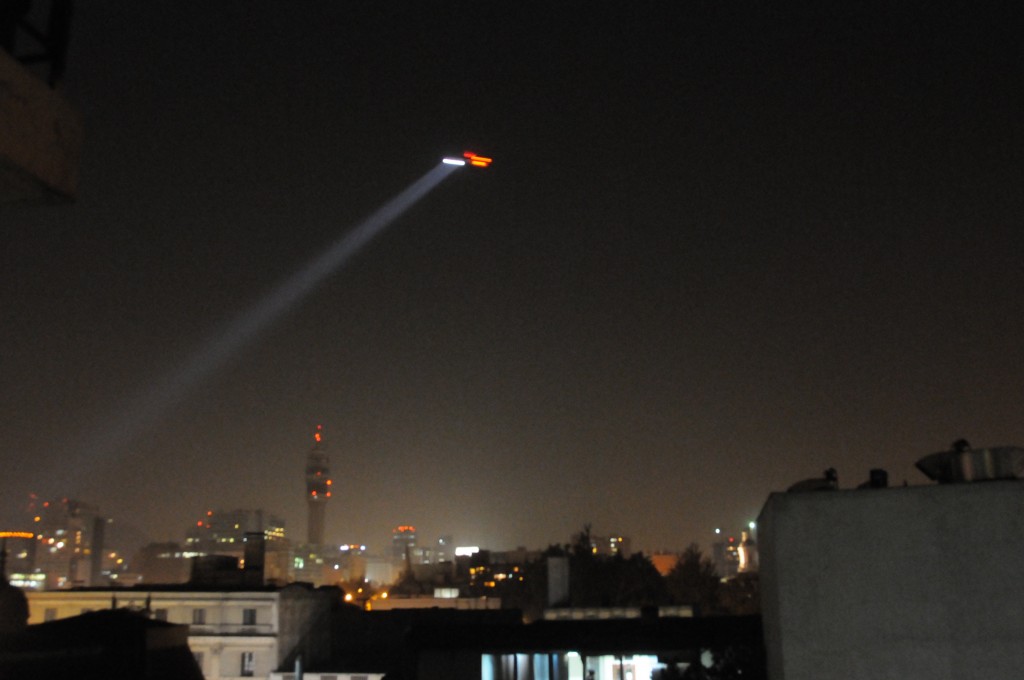
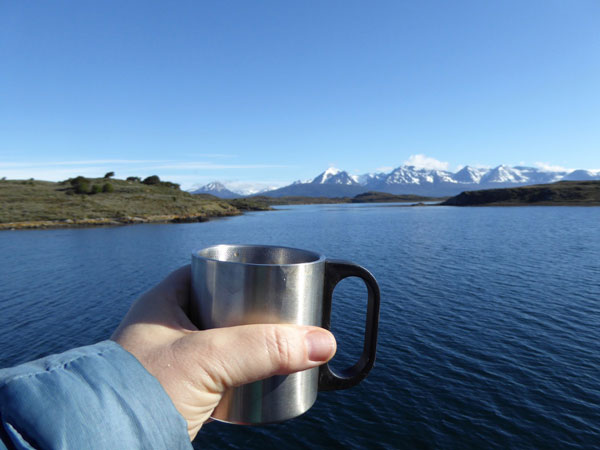
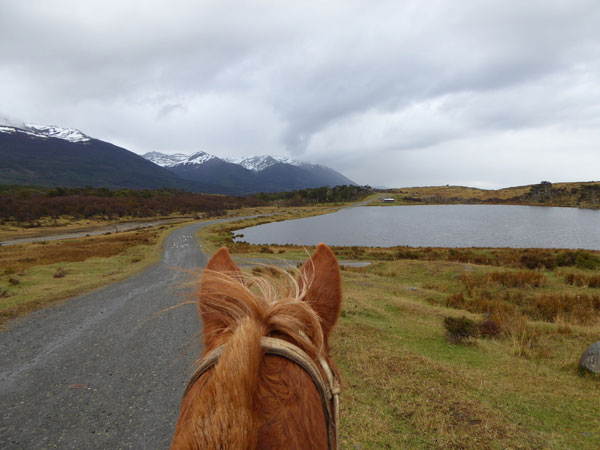
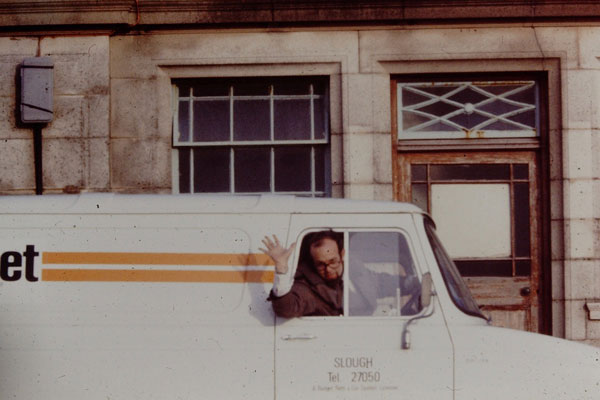
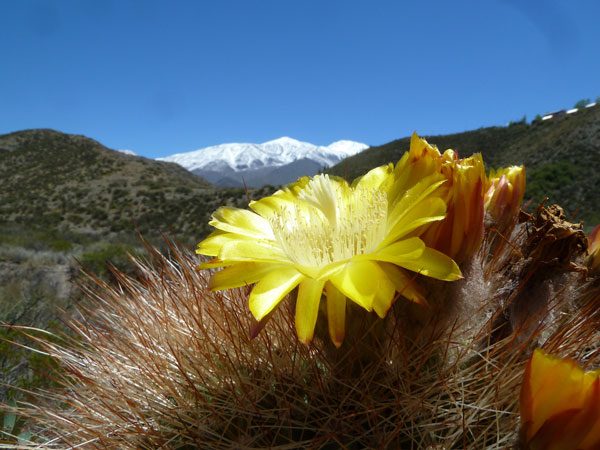
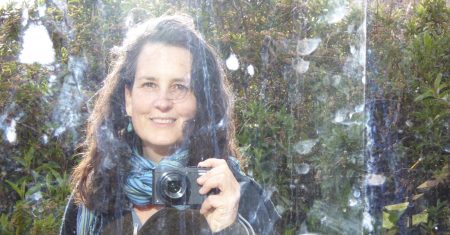
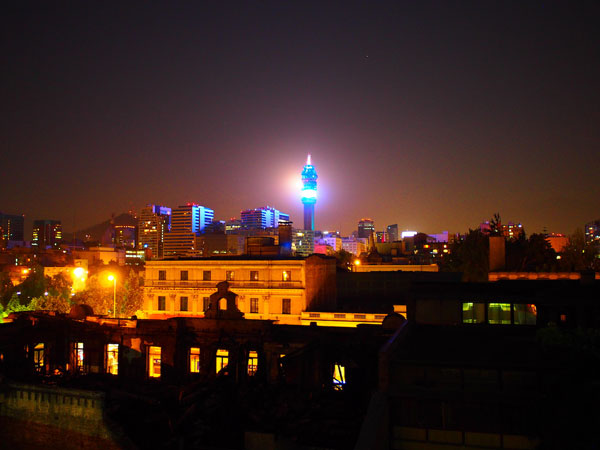
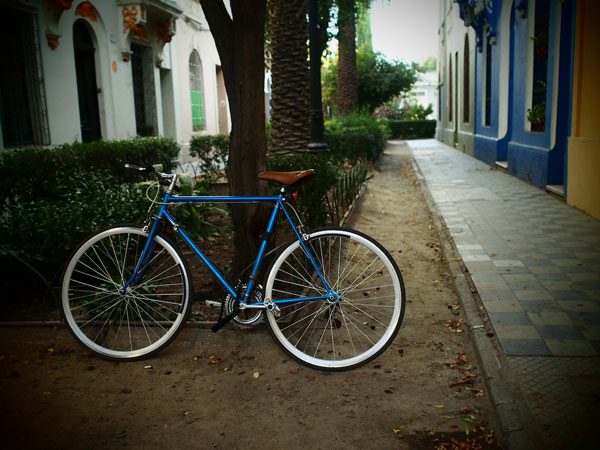


thanks for the dispatch eileen.
seems like such a heavy-handed reaction on the police’s part.
then again chile seems long practiced at repression.
It seemed very heavy-handed on the ground, but I’m hopeful that this was a bad example of modern Chilean policies. Usually things are more peaceful, and I’m hoping that’s the case in the future. I was mostly surprised by how quickly what was really peaceful could turn terrifying. And I’m so thankful I don’t live with that kind of fear on a daily basis.
What you describe was a normal day in Pinochet´s Age. Today we see the same story, with different actors; even when you can say that most of the country opposes to this proyect, and claim for other better, cheaper and cleaner solutions, companies and politicians seem to be the same people, so they pretend to hear and decide for the people, when they are actually deciding and acting for their own interests.
I, too, am a bit surprised at such heavy-handed police tactics to handle what sounded like a peaceful protest.
I’m deeply saddened that the Chilean government has voted in favor of such an environmentally damaging project. As someone who has experienced firsthand the natural beauty of Patagonia, it’s sobering to think that future generations may not be able to appreciate the same unspoiled views that I did as a result of this measure. Brush up on your Photoshop skills now, folks. You’ll be cloning out a lot of power lines from your landscape shots.
You would definitely not be showing your support of Patagonia Sin Represas if you knew all the shady things they’ve been doing. A friend of mine was sent to poll the people who are going to be affected by the project and she came back telling us horror stories that involved the so called good guys and she also gave us information about the project that isn’t shown here. While fully supporting Hidroaysén would be going a little bit too far, Patagonia Sin Represas are clearly the bad guys here. There’s even a rumor floating around saying that they get their funds from the thermoelectric companies, who are clearly against the project.
Chile has a lot of natural resources, but the government’s fixation with water as the main energy source is what enrages people. Protesting against a specific project won’t change things, as decisions like that tend to be negotitated when the idea generates, so it won’t be stopped. So far, the only solution I can come up with is forcing huge companies to find a way to either be more efficient or generate part of their own energy, like some of the mining companies are now doing. Educating the people so we can be more efficient too is a must. Petty campaigns are not enough, action is needed. As a northerner, I grew up being super conscious of proper energy use and living here, I see that most people spend way too much energy on stupid things, like leaving the lights on after leaving a room. I assure you that most people who were in that protest are careless about their own energy use.
It’s all sad…not just because of the actual damn, but rather that long power line that will run through the entire region and open the door to exploit more and more of this rare resource…almost untouched wilderness. Great opportunity for logging, I’m sure there is some mining to be done…just means that Patagonia will risk losing its draw as a world class destination at some point down the road. So it goes. But the discussion isn’t about that, its about the short term impact of cheaper energy for a couple years, about the actual flooding.
btw I think its Mackenna 🙂
I am so sure you’re right, about all of it, including the spelling. I couldn’t make it look right. I don’t understand the science behind it, but they way it also has greenhouse effects. People are joking that a) the new luka bills should have electricity towers across the torres del paine, and that b) now we don’t have to go all the way down south to see the famous “torres.” ugh.
I think many people are against this project because the whole background to it seems a bit murky. What is really needed is a serious discussion of consumption levels and options. We are all going to have to be more sensible about water and energy consumption and we are all going to have to decide what we are willing to give up. If we do not want to sacrifice the beauty of Patagonia, then we need to have a good look at what other options there are and what they are going to cost. What would we be willing to accept if we don’t want to accept Hidroaysen? Nuclear power? Wind power? Would we be willing to pay more for our energy in order to protect Patagonia? How much? Where could we save energy? I feel there must be other options available but they just have not been properly explored and I would be willing to make quite a few sacrifices in order to preserve the beauty of Patagonia. There are more choices here than just the pros and cons of one project.
I was really surprised to hear they’d pulled out the guanaco and zorrillo for this particular protest because I’d seen so much online that made me think a lot of the protesters would be gringos, upper class people and generally people who carry a bit more weight in society than the students who are used to getting drenched and tear gassed all the time. I feel like the police try to keep that side from those people and make everyone believe that protests turn violent due to the actions of protesters and that the police are just trying to maintain order. I used to believe it and think Rodolfo was overreacting until I saw two specific examples where it was clear that the police were the ones doing the escalating. You can’t convince me that when a water cannon is trying to clear Providencia, and people do in fact run away and clear the street, there is a real need to follow those people up a side street.
I’m glad you stayed out of the worst of it!
Oops, I meant to say that it’s clear to me that sometimes it’s the police doing the escalating. Sometimes it’s hooligans who use a legitimate protest as an excuse to break things.
both true. In this case, there wasn’t a chance for anyone to even blink before they started the over-the-top response, but I don’t deny that often it’s the protesters. We’ll see what Friday brings. Again, I’ll be no closer than the outermost fringe.
I was there Friday night, your description mirrors my experience. I went thinking I would just stay for a bit, yell a bit and get away if things got ugly. But as I was standing in a peaceful, cheerful crowd of mostly students but also some children and older people, we were suddenly attacked with tear gass and water guns. All I wanted was to get away and go home, but the crowd was surrounded before we knew it, and the only thing to do was to run in panic. Police were coming from everywhere. A kind, courageous security guard let some people into the gate surrounding an appartment building where we were safe but my friend didnt get in and was left on the street. I have never been anywhere near tear gass, I even avoid concerts because I don’t like big crowds, but after spending 3 summers in Patagonia and Tierra del Fuego, with my bicycle, I felt I had to at least go and bear witness to the protests. The courage of the Chileans down there, who go, lemons in hand, again and again, to face the guanacos and the tear gass, and arrest, and losing their jobs, even though most of them earn ‘middle class’ wages and endure working conditions that don’t even allow them a backpacking trip to Patagonia, astounds me. I have never been so terrified in my whole life, and I am utterly devastated by what I saw last night. Someone said to me last night ‘You don’t understand, this is not even about dams, this is about freedom’. Before yesterday, I wouldn’t have agreed. Now I do.
that was so powerful. Is there anywhere else we can read your writing and experiences? Thanks so much for commenting.
fwiw, this was my experience on Monday, on Friday it was more sedate, from my perspective.